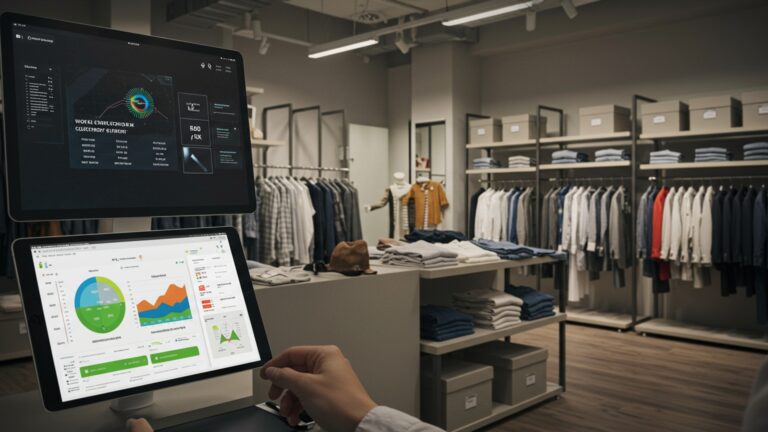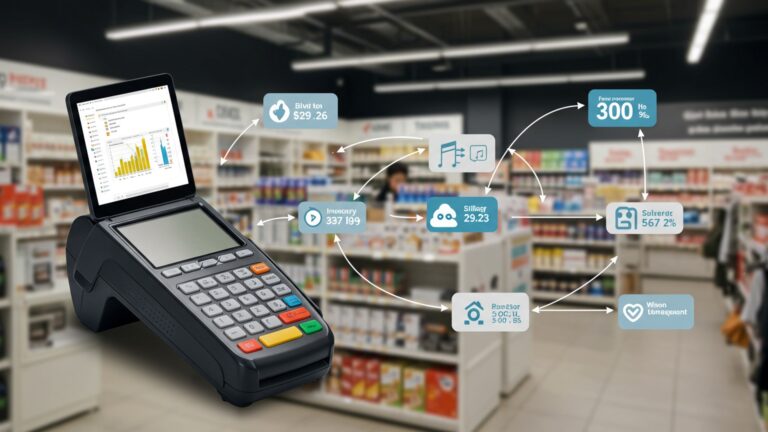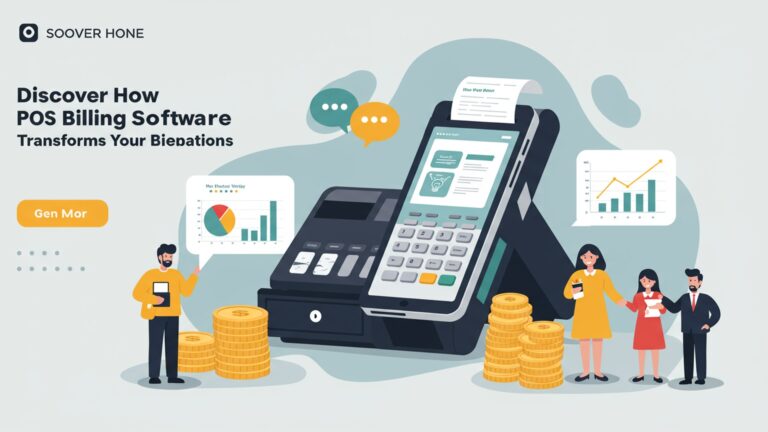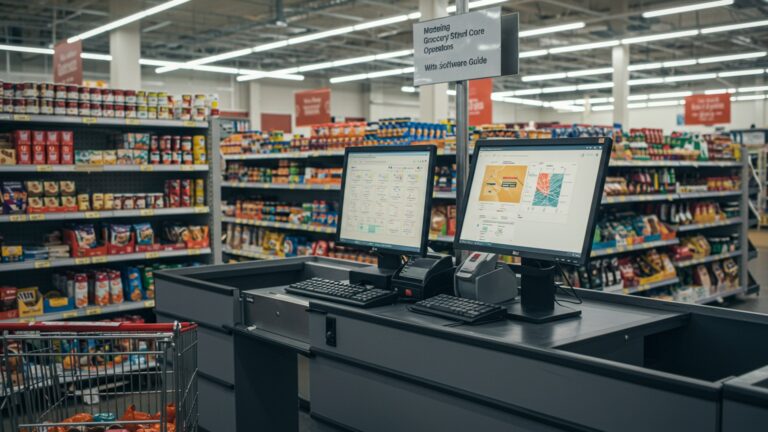Learn How to Choose the Right POS Software for Efficient Retail Operations
The contemporary retail landscape demands more than just transaction processing; it requires a strategic command center to navigate escalating complexities. Choosing the optimal pos software has evolved from a simple operational decision into a critical differentiator for efficiency and growth. With consumers expecting seamless omnichannel experiences and retailers facing pressures for real-time inventory accuracy and robust customer data, archaic systems no longer suffice. Recent advancements, from AI-driven analytics to integrated mobile POS and contactless payment options, transform how businesses operate. Selecting the right platform now dictates not just checkout speed but also inventory control, personalized marketing capabilities. overall operational agility, making an informed choice paramount for sustaining competitive advantage in today’s dynamic market.
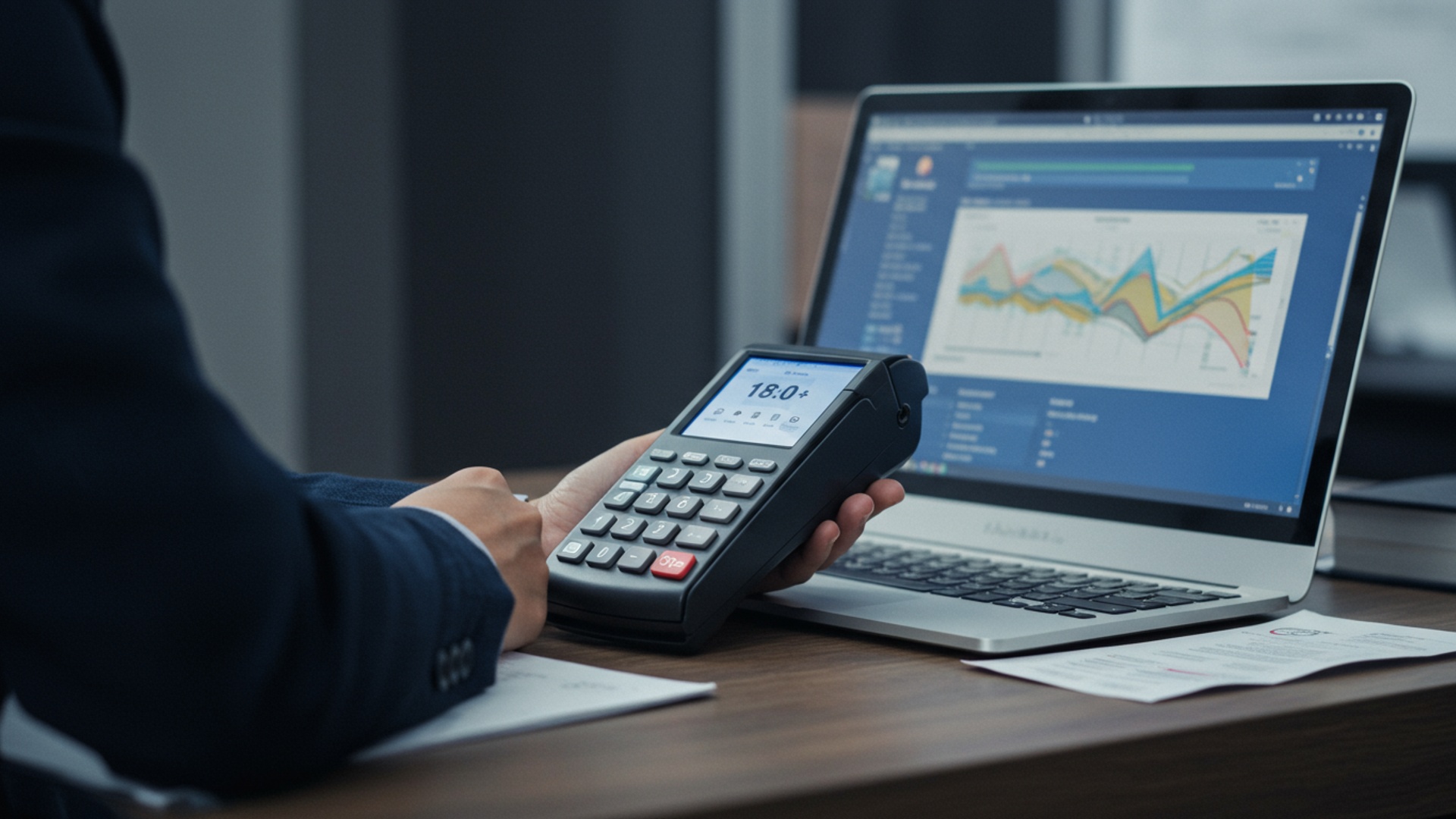
Understanding POS Software: The Backbone of Modern Retail
In today’s fast-paced retail environment, efficiency and customer experience are paramount. At the heart of a successful operation lies robust technology. among the most critical components is POS software. POS stands for Point of Sale. while it originated as a simple cash register, modern POS software has evolved into a comprehensive business management system. It’s the central hub where transactions occur, inventory is tracked, customer data is managed. sales insights are generated.
Think of POS software as the brain of your retail store. Every sale, return. exchange flows through it. its capabilities extend far beyond mere transaction processing. It empowers retailers to streamline operations, reduce manual errors. make data-driven decisions that can significantly impact profitability. Without the right POS software, businesses risk falling behind competitors, struggling with inventory discrepancies. failing to deliver the seamless customer experiences that modern shoppers expect.
Key Features to Look For in Modern POS Software
When selecting POS software, it’s crucial to look beyond basic transaction processing. A truly effective system will offer a suite of features designed to enhance every aspect of your retail business. Here are the essential capabilities to prioritize:
- Sales & Transaction Management
- Inventory Management
- Customer Relationship Management (CRM)
- Employee Management
- Reporting & Analytics
- Integrations
- Omnichannel Capabilities
This is the core function. Look for intuitive interfaces, quick product lookup, discount application, split payments, returns/exchanges. the ability to process various payment types (cash, credit/debit cards, mobile payments).
Robust inventory tracking is vital. The best POS software will offer real-time inventory updates, low-stock alerts, purchase order creation, vendor management. the ability to track inventory across multiple locations. This feature alone can prevent stockouts and overstocking, saving considerable capital.
Modern POS software often includes integrated CRM tools. These allow you to capture customer data, track purchase history, manage loyalty programs. segment customers for targeted marketing efforts. Understanding your customers is key to building lasting relationships.
Efficiently manage your staff with features like time clock functionality, sales performance tracking, commission calculations. role-based access permissions. This helps optimize staffing and incentivizes sales teams.
Data is power. A strong POS software system provides detailed reports on sales trends, popular products, peak hours, employee performance. inventory turnover. These insights are invaluable for strategic planning and identifying areas for improvement.
Your POS software should not operate in a silo. Look for seamless integration with other critical business tools such as e-commerce platforms (e. g. , Shopify, WooCommerce), accounting software (e. g. , QuickBooks, Xero). various payment processors. This creates a unified ecosystem and avoids data siloing.
For retailers operating both online and in physical stores, omnichannel support is non-negotiable. This means consistent inventory, customer data. pricing across all sales channels, allowing for services like “buy online, pick up in-store” (BOPIS) or “return in-store for online purchases.”
Types of POS Software Deployments
When choosing POS software, you’ll generally encounter two main deployment models: cloud-based (SaaS) and on-premise. Each has distinct advantages and disadvantages that can influence your decision based on your business needs and technical capabilities.
This model, also known as Software-as-a-Service, hosts your POS software and data on remote servers managed by the vendor. You access the system via a web browser or dedicated app, typically paying a monthly or annual subscription fee.
- Pros
- Lower upfront costs (no expensive server hardware).
- Automatic updates and maintenance handled by the vendor.
- Accessible from anywhere with an internet connection.
- Scalable – easy to add new terminals or locations.
- Robust data backup and security often included.
- Cons
- Reliance on internet connectivity (though many offer offline modes).
- Subscription fees can add up over time.
- Less control over data and customization options compared to on-premise.
With this model, the software is installed directly on your own servers and computers within your business premises. You own the software license and are responsible for its maintenance, updates. data storage.
- Pros
- Full control over your data and system.
- No reliance on internet connectivity for core operations.
- Greater customization potential.
- One-time purchase cost (though maintenance fees may apply).
- Cons
- Higher upfront investment for hardware and software.
- Requires in-house IT expertise for maintenance, updates. troubleshooting.
- Data backup and security are your responsibility.
- Less accessible remotely.
Here’s a quick comparison:
| Feature | Cloud-Based POS | On-Premise POS |
|---|---|---|
| Cost Structure | Subscription (monthly/annual) | Upfront purchase + maintenance |
| Accessibility | Anywhere with internet | Local network only (typically) |
| Maintenance | Vendor handles | Your responsibility |
| Updates | Automatic | Manual, scheduled by you |
| Data Control | Via vendor | Full control |
| Scalability | Highly scalable | Requires hardware upgrades |
| Internet Reliance | High (though often offers offline mode) | Low for core functions |
Assessing Your Retail Business Needs
Before diving into product demonstrations, a critical first step is to thoroughly assess your specific business needs. A one-size-fits-all approach rarely works when it comes to POS software. Consider these factors:
- Industry-Specific Requirements
- Restaurants/Cafes
- Fashion/Apparel
- Grocery Stores
- Service Businesses (Salons, Spas)
- Business Size and Scalability
- Budget Considerations
- Existing Tech Stack
Need table management, kitchen display systems (KDS), online ordering integration, ingredient tracking. tip management.
Require robust inventory management for sizes, colors. styles (matrix inventory), loyalty programs. clienteling features.
Demand fast checkout, scale integration, extensive product databases. perishable item tracking.
Appointment scheduling, staff calendars. service package management are key.
Are you a small boutique with one location, or a growing chain planning multiple stores? Your chosen POS software must be able to scale with your ambitions. Consider how easily you can add new terminals, users, or locations without a complete system overhaul.
POS software costs can vary wildly. Factor in not just the initial purchase or subscription fees. also hardware costs (POS terminals, receipt printers, barcode scanners), installation, training. ongoing support. Be realistic about what you can afford without compromising essential functionality.
What other software do you currently use? Your accounting software, e-commerce platform. customer loyalty programs should ideally integrate seamlessly with your new POS software. This prevents data duplication and ensures a smooth flow of details across your business.
Evaluating POS Software Providers
Once you have a clear understanding of your needs, the next step is to evaluate potential POS software providers. This goes beyond just feature lists; it involves scrutinizing the company behind the product.
- Reputation and Support
- Security Features
- User Interface and Ease of Use
- Free Trials and Demos
- Scalability
Research the vendor’s reputation. Read online reviews (e. g. , Capterra, G2), ask for references. inquire about their customer support. What are their support hours? Do they offer phone, email, or chat support? What’s the typical response time? Excellent support is invaluable when issues arise.
Your POS software will handle sensitive customer data and financial transactions. Ensure the system is PCI compliant and offers robust security features like data encryption, user access controls. regular security updates. Data breaches can be devastating.
A powerful system is useless if your staff can’t easily operate it. Request demos and even free trials to experience the user interface firsthand. Is it intuitive? How much training will be required for your team? A user-friendly system reduces training time and errors.
Most reputable providers offer free trials or personalized demonstrations. Take advantage of these opportunities. Test the software with your actual products and scenarios. Get your staff involved in the testing process to gather their feedback.
Reiterate this point. Your chosen POS software should not only meet your current needs but also accommodate future growth. Can it handle increased transaction volumes, new product lines, or additional store locations without requiring a complete system overhaul?
Real-World Application: A Case Study
Consider “The Artisan’s Nook,” a small independent gift shop specializing in handmade goods. Initially, they relied on a traditional cash register and manual inventory tracking in a spreadsheet. As their business grew and they launched an online store, they faced several challenges:
- Inventory Discrepancies
- Slow Checkout
- Lack of Customer Insights
- Time-Consuming Reporting
It was difficult to keep track of stock across the physical store and the e-commerce site, leading to overselling online or stockouts in-store.
Manual entry of product codes and prices slowed down checkout, especially during busy periods.
They couldn’t easily identify their best customers or track purchase history for personalized recommendations.
Generating sales reports took hours each week, pulling data from multiple sources.
After a thorough evaluation, The Artisan’s Nook decided to implement a cloud-based POS software solution. They chose a system that offered:
- Integrated Inventory Management
- User-Friendly Interface
- Basic CRM
- Automated Reporting
Real-time synchronization between their physical store and Shopify e-commerce platform.
Easy for their part-time staff to learn and operate, speeding up transactions.
Allowed them to capture customer emails, track loyalty points. send targeted promotions.
Dashboard provided instant insights into sales, product performance. customer trends.
Within three months of implementation, The Artisan’s Nook saw significant improvements: reduced inventory errors, a 15% increase in average transaction speed. the ability to launch a successful loyalty program that boosted repeat business by 10%. This demonstrated how the right POS software transformed their operations from cumbersome to efficient and data-driven.
Actionable Steps for Choosing Your POS Software
To ensure you make an informed decision, follow these actionable steps:
- Define Your Needs Clearly
- Research and Shortlist Options
- Request Demos and Free Trials
- Check References and Reviews
- Consider Total Cost of Ownership (TCO)
- Prioritize Support and Training
- Plan for Implementation
Before looking at any software, sit down and list every feature, integration. requirement your business needs now and in the next 3-5 years. Involve key staff members in this process.
Based on your defined needs, research reputable POS software providers. Use review sites, industry publications. peer recommendations. Create a shortlist of 3-5 systems that seem like a good fit.
Contact your shortlisted vendors for personalized demos. Prepare a list of specific questions and use cases to test during the demo. If possible, utilize any free trial periods to get hands-on experience with the POS software.
Don’t just rely on vendor marketing. Seek out honest reviews from current users, especially businesses similar to yours. Ask vendors for references you can contact directly.
Look beyond the sticker price. Factor in hardware, setup, training, monthly/annual fees, payment processing rates. potential add-on costs. Get a clear, all-inclusive quote.
Ensure the vendor offers comprehensive training resources and reliable customer support. A great POS software system is only as good as the support behind it.
interpret the implementation process. What’s the timeline? What resources will you need? A smooth transition is crucial to minimize disruption.
Common Pitfalls to Avoid
Choosing the wrong POS software can be a costly mistake. Be aware of these common pitfalls:
- Underestimating Training Needs
- Ignoring Integration Capabilities
- Choosing Solely Based on Price
- Overlooking Customer Support
- Not Planning for Future Growth
A powerful system requires proper training. Don’t assume your staff will intuitively pick it up. Budget time and resources for thorough training to maximize adoption and minimize errors.
Overlooking how the POS software integrates with your existing accounting, e-commerce, or CRM systems can lead to data silos, manual data entry. inefficiencies. Always prioritize seamless integration.
While budget is vital, opting for the cheapest POS software might mean sacrificing essential features, scalability, or reliable support. A slightly higher investment in the right system can yield significant long-term returns.
When something goes wrong (and it inevitably will), responsive and knowledgeable customer support is critical. A system with poor support can lead to significant downtime and frustration. Always test their support responsiveness during your evaluation.
Selecting a system that barely meets your current needs can quickly become obsolete as your business expands. Always choose POS software with scalability in mind to avoid needing a costly replacement down the line.
Conclusion
Choosing the ideal POS isn’t merely a software purchase; it’s a strategic investment in your retail future. From my observations, many retailers initially focus solely on basic transaction processing, overlooking critical aspects like robust inventory management for real-time stock visibility or seamless CRM integration to personalize customer interactions, which are vital in today’s competitive landscape. Your actionable next step should be to meticulously evaluate potential systems through free trials and detailed demos, always questioning their scalability and how they handle unique operational quirks—perhaps even testing their offline capabilities, a growing necessity. Don’t just tick boxes; envision daily use and how it integrates with emerging trends like unified commerce. Remember, a truly effective POS, like one that easily integrates with online ordering or provides insightful analytics, becomes the operational heartbeat of your business. It empowers you to adapt to market shifts, delight customers. ultimately drive sustainable growth. Embrace this decision as an opportunity to future-proof your retail journey.
More Articles
How to Select the Best POS Software Guide for Business Efficiency
How to Select the Best Billing and POS Software for Your Business
How to Optimize Inventory Management POS India for Profit Growth
Top 10 Benefits of POS Software for Clothing Stores in India
FAQs
What exactly is POS software and why does my retail business need it?
POS (Point of Sale) software is the system your business uses to complete sales transactions. It’s crucial because it does more than just process payments – it helps manage inventory, track sales data, handle customer details. even streamline employee management. Essentially, it’s the central hub for your daily operations, making everything more efficient and providing valuable insights to help you grow.
There are so many features! How do I figure out which ones are essential for my store?
Start by listing your current pain points and what you hope to achieve. Are you struggling with inventory accuracy? Do you need better customer loyalty programs? Want to integrate with your online store? Focus on core functionalities first, like sales processing, inventory tracking. reporting. Then, prioritize features that directly address your biggest operational challenges or goals. Don’t pay for bells and whistles you won’t use.
Cloud-based vs. on-premise – what’s the difference and which is better for a retail store?
Cloud-based POS runs over the internet and is usually subscription-based, offering flexibility, remote access. automatic updates. On-premise POS is installed directly on your computers, giving you more control over data but requiring more internal IT maintenance. For most modern retail stores, cloud-based is often preferred due to its lower upfront costs, scalability. ease of access from anywhere.
Can POS software really help me manage my inventory better?
Absolutely! A good POS system is a game-changer for inventory. It tracks every sale, return. transfer in real-time, giving you an accurate picture of what’s in stock. Many systems also offer features like low-stock alerts, automated reordering. detailed inventory reports, which help reduce overstocking or stockouts, minimize waste. improve your cash flow.
How essential is it for the POS to integrate with my other business tools, like accounting or e-commerce?
It’s super crucial! Seamless integration means your different systems talk to each other, eliminating manual data entry, reducing errors. saving a ton of time. For example, if your POS integrates with your accounting software, sales data automatically syncs. If it connects to your e-commerce platform, inventory levels are consistent across both channels. This creates a unified view of your business and smoother operations.
What should I consider regarding the cost of POS software?
Look beyond just the monthly subscription fee. Factor in hardware costs (like card readers, receipt printers), setup fees, training costs. any potential transaction fees. Also, consider ongoing support fees. Sometimes a slightly higher monthly fee might offer more comprehensive features or better support, leading to greater long-term value. Always ask for a transparent breakdown of all potential costs.
How easy should the software be for my staff to learn and use?
Very easy! An intuitive and user-friendly interface is crucial. If your staff struggles to use the system, it slows down transactions, frustrates customers. increases the chance of errors. Look for systems with clear layouts, simple navigation. minimal clicks to complete common tasks. Ask about training resources and whether the vendor offers support for onboarding your team. Simpler is always better for day-to-day operations.

